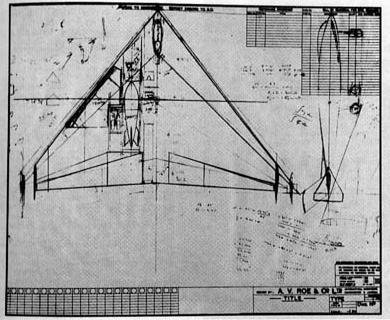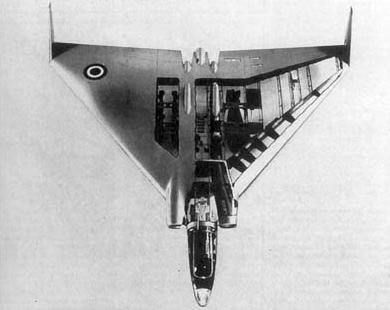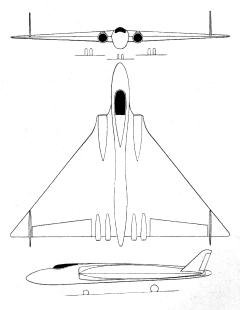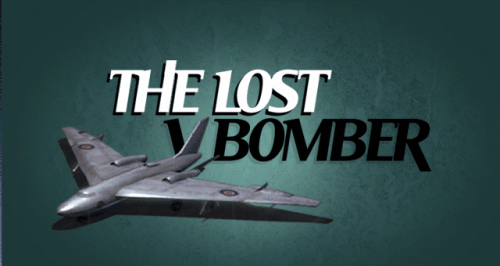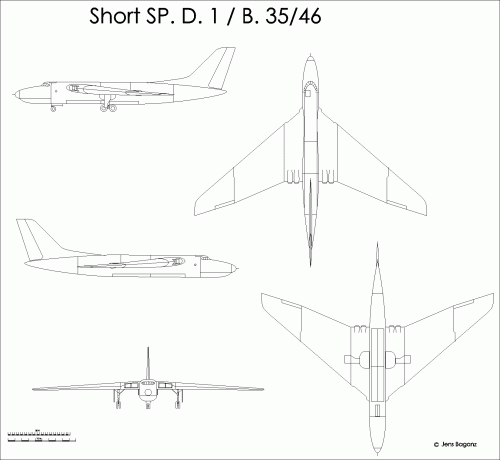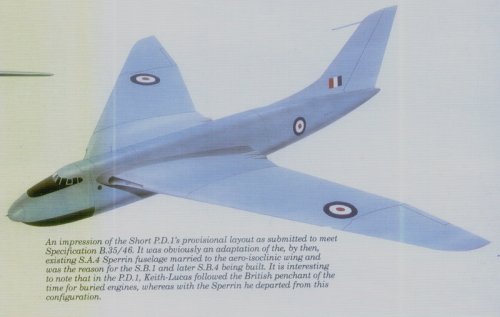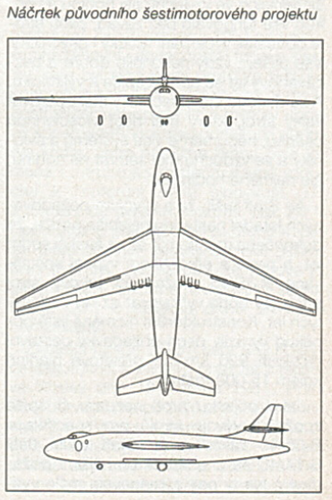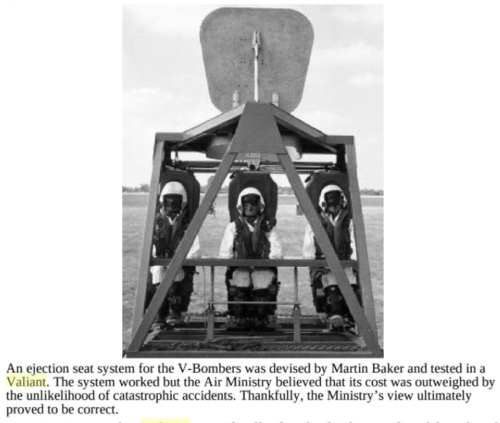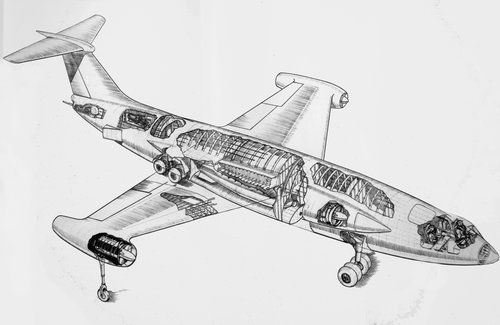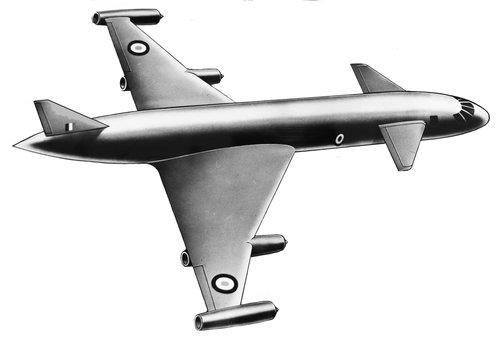The S.A.4 Sperrin of 1951 had a straight wing and conventional tail. Short planned a radical redesign featuring G.T.R. Hill's "Aeroisoclinic" swept wing in tailless configuration. Swept wings tended to bend and twist badly at the wrong moment, i.e. when under high stresses. Hill's idea was that the wing would bend in such a way as to retain its desirable aerodynamic properties (The Horten brothers in Germany had experimented with this idea in the 1930s, I don't know if Hill was aware of their work). The Short S.B.1 and S.B.4 were testbeds for the wing design. The tow-launched S.B.1 glider in fact flew just before the Sperrin, but crashed later on its second flight. The wings were repaired and mated to a new powered fuselage to create the S.B.4 Sherpa. It flew in 1953 and I think is still at Duxford or somewhere. Although it did not carry the name, it was in effect the last of Hill's series of Pterodctyls, themselves a continuation of J.W. Dunne's original tailless designs, one of which was the first aeroplane ever to be certified as stable in flight. The aeroisoclinic Sperrin would have been a historic beast indeed, but I never thought of it before as one of the V-bombers.
As an aside, Short Bros. built both the first - the D.5 - and the last - the Sherpa - machines in the classic Dunne lineage ever to actually fly.

